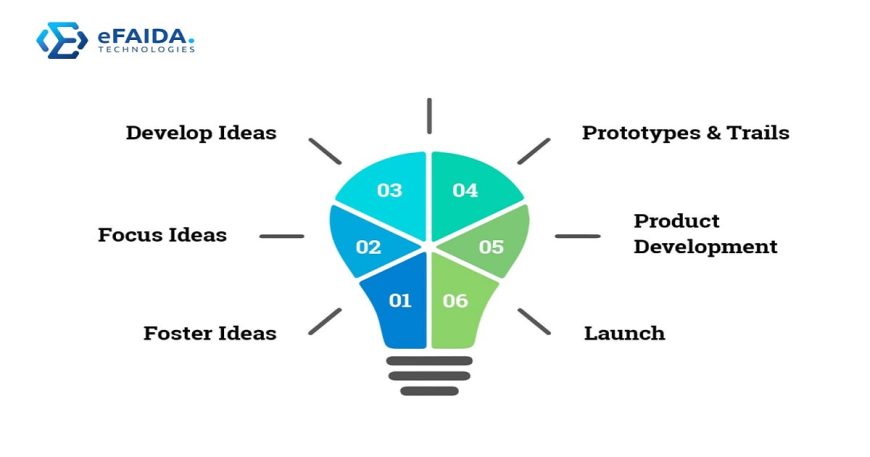Introduction
Research and Development have become an essential step in the course of software product design. One of the key elements for those who are keen on continued innovation and success is to deeply understand the concept of R&D, as well as its historical background and the status quo in this sphere.
Definition of Research and Development in Software Product Development
Software R&D involves an exploration cycle of capturing and developing new ideas, technologies, and methodologies that are then applied toward developing innovative software applications. This task encompasses things such as experimenting, data analysis, and again, improvement on the quality and performance of the design.
Historical Importance of R&D in Driving Innovation
Since the dawn of time, R&D has been a key determinant for both technological evolution and industrial development. Initially, a rudimentary machine to modern day software applications was enabled by the R&D process which is responsible for the creation of the digital world we interact in.
Overview of the Current Landscape in Software Product Development
In the leapfrog tech industry of today, it is every company committing itself to try its utmost to remain in the lead by pumping in huge sums of money in R&D. Through the birth of entrepreneurial ventures and the spark of inventiveness up to the advanced technological advancement in software products that are already known to be in existence, the devotion to innovation and improvement is the core.

Benefits of R&D in Software Product Development
A. Enhancing Product Quality and Functionality
The execution of R&D activities opens up the possibility for software of high quality and performance to be developed. By subjecting the code to a variety of tests, analysis, and fine-tuning, developers locate and eliminate weaknesses or problems, edging their final product toward perfection.
B. Improving Customer Experience and Satisfaction
The user experience (UX) and the performance of software are the key factors that end users expect to be perfect nowadays. R&D blunts the competition by tailoring products to fit the specific niche of target audiences through which the companies can, ultimately, improve customer satisfaction.
C. Staying Competitive in the Market
Originality becomes an irreplaceable asset in a volatile market, which is the tool for superiority. Improved R&D can set a company apart from the routine of its competitors, attract new clients as well as retain the established clientele by providing fresh solutions to meet emerging market needs.

Strategies for Effective R&D in Software Product Development
A. Setting Clear Goals and Objectives
For the R&D plan to be successful, companies should draw up desired results and targets. The whole process is coordinated through laying down the clear-cut answers on the desired outcomes with the given milestones upfront, and thus the teams commit most of their efforts towards the realization of the specific targets and the monitoring of progress.
B. Investment in Skilled Talent and Resources
An R&D’s success is heavily dependent on its diverse ranges of abilities, knowledge, and financial resources. Skilled talent investment in collaboration with other necessities that include tools and technologies is vital in the company as it allows teams to gain the capacity for invention, innovation, and product development.
C. Continuous Monitoring and Evaluation of R&D Efforts
It is equally important for any company that is involved in research and development (R&D) endeavors to routinely observe and assess their efforts in this sphere to track how progress is going and to pinpoint the parts that need working on. Through data collection and analysis, therefore, businesses can get insightful answers and modify their strategies, in the course of which to keep their R&D processes up to date.
Challenges in Implementing R&D in Software Product Development
A. Balancing Short-term Goals with Long-term Innovation
Identification of R&D problems is one of the main issues that companies that implement R&D activities face. They have to find a way of maintaining the implementation of short-term goals like deadlines fulfillment, and delivery of the finished product on time as well as innovating for the long term. Striking the right balance between meeting urgent needs to date and investment in future development remains crucial for guaranteed long-term success.
B. Managing Risks and Uncertainties
R&D by its nature tops the quality and risks in that companies innovate by completely modifying their ideas and technological solutions, which might or might not grant the wanted results. Proper planning, testing, and mitigation strategies help in managing these risks effectively, though, and this is necessary to reduce any risks of losing sight of the objectives, and thus optimize success.
C. Overcoming Budget Constraints and Resource Limitations
When companies face budgetary constraints or shortage of resources, those rings can be the major factors limiting the investment in R&D. Businesses need to take the front seat in innovations, they must channel their resources judiciously, and explore government and private funding avenues to overcome the obstacles and facilitate innovation.

Future Trends in R&D for Software Product Development
A. Emphasis on Artificial Intelligence and Machine Learning
AI and ML technologies have gained more importance in R&D software product development as the future of such advancements involves the use of such technologies. Companies have a look at the ways AI and ML can enhance product performance, optimize processes as well as provide more personalized experiences to users.
B. Shift towards Agile and DevOps Practices
The agile approach and DevOps implementation are currently being considered as one of the best approaches to help enterprises hasten new product development cycles, reinforce collaboration, and achieve speed to market according to R&D requirements. The receptivity of these manners by companies defines their way of playing in the field of competition and agility which is doom for the context of a fast-brightening world.
C. Integration of User-Centered Design Principles
User-centered design principles are the key aspect of R& &D research that allows businesses to preemptively provide products that are convenient, user-friendly, and attention-getting. Through the design and development of products that involve the user as part of the process from initiation to completion, companies can assure that their solutions are reliable and deliver a good experience and thus meet the needs and expectations of their target end-users.
Conclusion
A. Summary of Key Points Discussed
R&D is an important integral part of software product development giving a clear leadership of the innovation, improved product quality, and customer satisfaction. Through participation in R&D efforts and endurance of the difficulties, companies will be in the place for continuous development and to attain an edge over the competitors in the market.
B. Importance of Investing in R&D for Sustainable Growth
R&D centers are not just short-term strategies but the product of long-term commitment to technological innovation, beating the competitors, and conforming to the market environment. The enterprises where R&D is given higher priority are more likely to operate effectively in the ever-changing environment of the digital age, tapping new opportunities and surviving.
C. Call to Action for Companies to Prioritize Research and Development
While companies struggle with handling software development complexity, R&D and constant innovation must be given primary attention. For any company to thrive in the digital era, it should develop an innovative culture, invest in talent and resources and it should adopt cutting-edge technologies and working practices which are the keys to unlocking new growth frontiers.
FAQs
Q1. How can small startups benefit from investing in R&D?
Small- and medium-scale startups can take advantage of R&D in doing so by distinguishing their product offerings from the competition, enhancing their products to become more appealing and hence attract customers to whom they also appeal, and investors and customers who are interested in innovative ideas and solutions. Through measures of calculated involvement, unleashing their speed, and utilizing customer issues as a crutch, small startups can lead growth and success in the market.
Q2. What are some common misconceptions about R&D in software product development?
R&D for software product development often faces criticism that innovational R&D is a privilege of big companies with abundant resources. Technically, companies regardless of their nature and scope can learn from their R&D initiatives, if the staff are open to different ideas, creativity, and collaboration while they work.
Q3. How can companies measure the return on investment in R&D initiatives?
Organizations have the possibility of evaluating the return on investment (ROI) of R&D functions through setting target indicators; for instance, product quality improvements, customer satisfaction data, increased revenue, and market share growth. Amid these tracking metrics, companies tend to compare their current position to the initial investment and thus, band the decision-making process into a data-driven procedure for future strategies.




